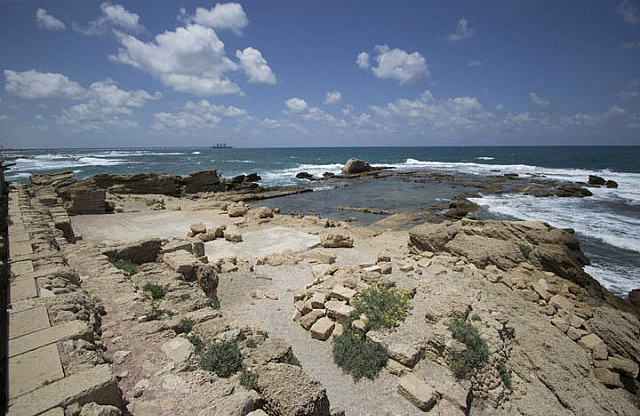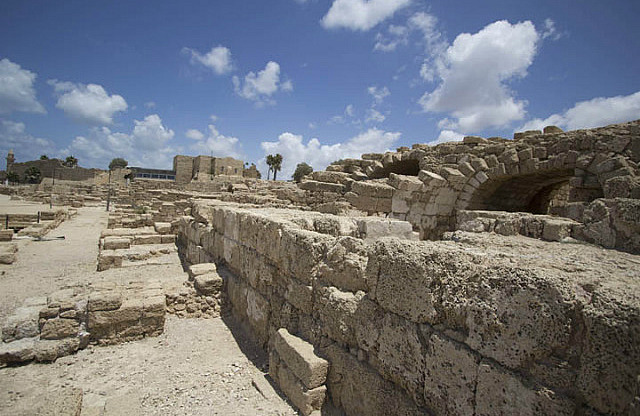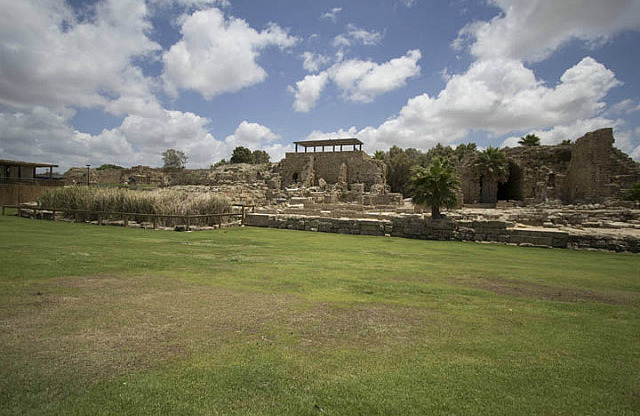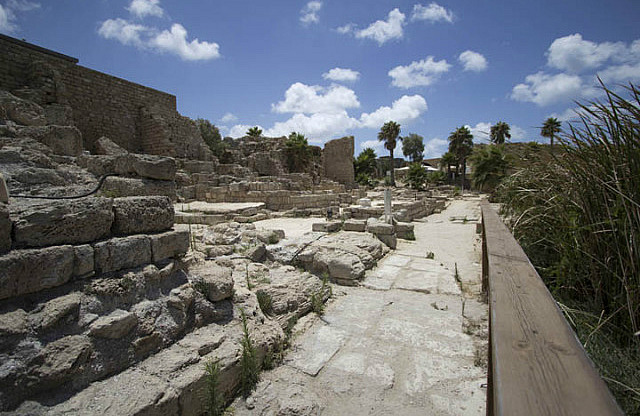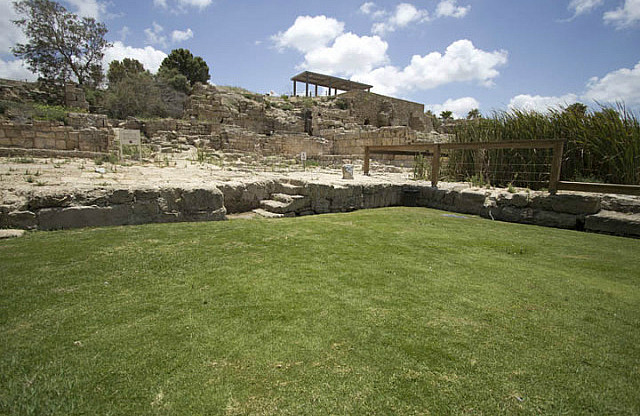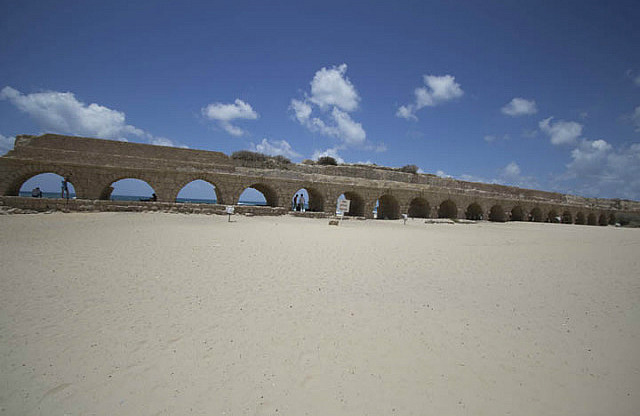CAESAREA MARITIMA
Historical Background
Caesarea Maritima had its beginnings during the Persian rule (586-332 BC) when the Phoenician kings of Tyre decided to build a southern port settlement along the Mediterranean coastline. The settlement grew into a city and became more populated during the Hellenistic period (332-37 BC) as well. Prior to the name Caesarea, the city was known as Straton's Tower. But when the territory was given to King Herod in 30 BC by Octavian (Augustus Caesar) after defeating Marc Antony at the battle of Actium in 31 BCE, Herod decided to re-build the city and name it Caesarea in honor of the patronage of the emperor. Herod ruled the area of Judea from 37-4 BCE and made Caesarea his permanent residency with a beautiful palace, a large amphitheater for entertainment and gladiatorial games (occupancy 30,000), and a fully-outfitted theater for performances and social gatherings that could hold 10,000 spectators. Josephus remarks concerning Herod's choice of Caesarea, “And he [Herod] chose on the coast one forsaken town by the name of Straton's Tower...which thanks to its favourable location was suitable for carrying out his ambitious plans. He rebuilt it entirely of white stone and adorned it with a royal palace of unique splendor, displaying...the brilliance of his mind” (1.21.5). Herod's magnificent plans for the city took 12 years to build and a great celebration took place in the city in 10/9 BCE to commemorate its completion. Due to the lavished building projects from Herod, the city grew into an important commercial center having a well built harbor for trade and commerce, and being , and in 6 AD, it had become the administrative headquarters of the Roman government in the region, deposing Archelaus (Herod's son) and implementing Roman prefects.
Biblical Significance
After Philip explained the scriptures and preached the gospel to the Ethiopian eunich in his chariot in Samaria, he was caught away and appeared farther north in the town of Azotus (Acts 8:27, 35). From there to Caesarea, Acts 8:40 says, “He [Philip] preached the Good News there [Azotus] and in every town along the way until he came to Caesarea.” Scripture does not specify if he then chose to live there, but it seems that he did. Luke mentions Paul staying at Philip's house in Caesarea on his way back to Jerusalem to complete his third missionary journey nearly 25 years after Philip first arrives in Caesarea (Acts 21:8). Also, it was at Caesarea that Agabus prophesied of Paul being arrested in Jerusalem (Acts 21:10-12). But regardless of the warnings Paul chose to return to Jerusalem (21:15-17).
After being arrested and imprisoned, Paul was transferred out of Jerusalem due to the threat of the Judeans plotting to kill him (Acts 23:12-22). He was brought to Caesarea where the Roman procurator (governor) Felix was residing, and Paul remained in prison there for two years (Acts 23:23-24; 24:27). After appealing to Caesar in a hearing before Festus (who succeeded Felix as governor), Paul was boarded on a ship under the supervision of a Roman captain named Julius and they left the port for the long journey to Rome (Acts 265:10-12; 27:1).
Archaeological Significance
Still visible today at Caearea are many remains of the once great city that Herod built. Some of the more notable ruins are: the foundation of Herod's palace, the hippodrome, the theater, and the inner harbor. Of particular interest are Herod's palace and the inner harbor. When Paul was brought before Fexlix, Agrippa, and Festus, he would have been summoned to take audience with them in the palace. And for two years Paul would have been kept in holding cells that are suspected by archaeologists to be part of the chambers found in close proximity to the inner harbor.
ROMAN AQUEDUCT
The city of Caesarea did not have a natural source of fresh water to supply its city, and therefore, an aqueduct was constructed by Herod and later repaired and expanded (adding an additional channel) by his son Achelaus. The aqueduct transported water from the Shuni springs ~7.5 km northeast of Caesarea. Stretching several kilometers, the gradient of the channel was ~20 cm/km decline toward Caesarea. With a constant supply of fresh water, the aqueduct played a vital part in the prosperity and growth of the city.






